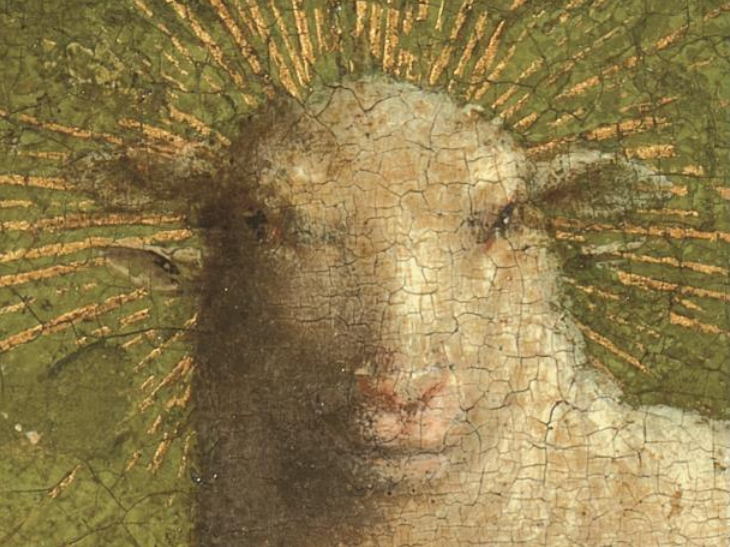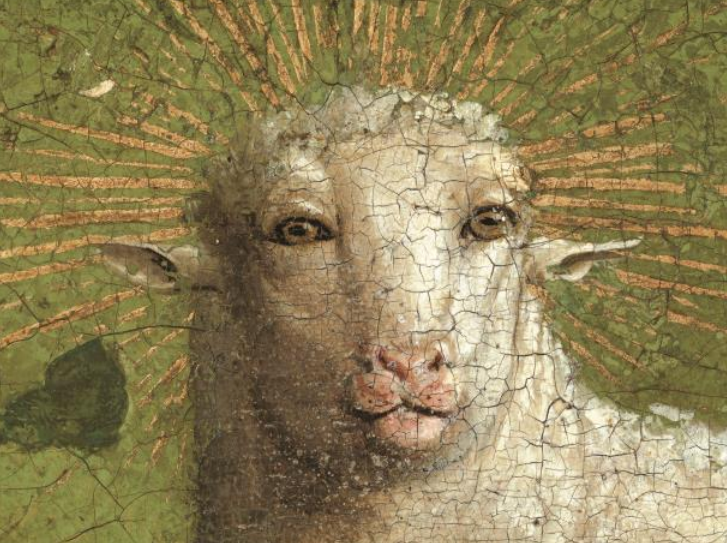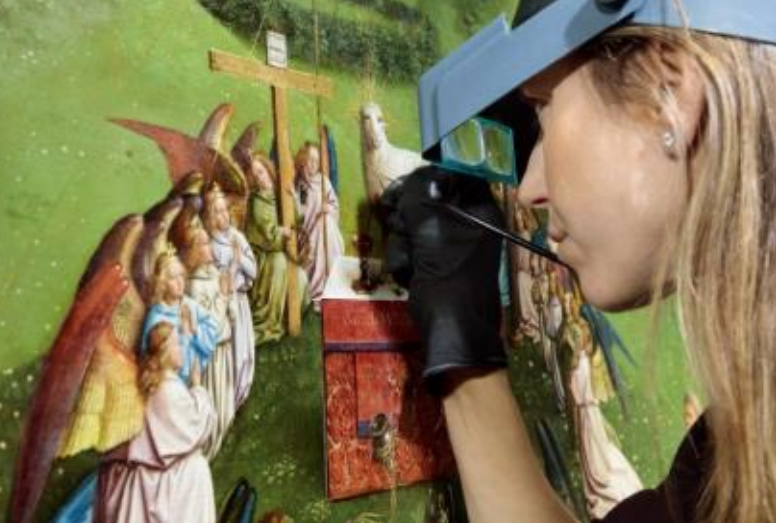Priceless 15th century artwork restored with ‘humanoid sheep face’ prompts derision and debate
Ghent Altarpiece by Jan and Hubert Van Eyck sees major transformation
Your support helps us to tell the story
From reproductive rights to climate change to Big Tech, The Independent is on the ground when the story is developing. Whether it's investigating the financials of Elon Musk's pro-Trump PAC or producing our latest documentary, 'The A Word', which shines a light on the American women fighting for reproductive rights, we know how important it is to parse out the facts from the messaging.
At such a critical moment in US history, we need reporters on the ground. Your donation allows us to keep sending journalists to speak to both sides of the story.
The Independent is trusted by Americans across the entire political spectrum. And unlike many other quality news outlets, we choose not to lock Americans out of our reporting and analysis with paywalls. We believe quality journalism should be available to everyone, paid for by those who can afford it.
Your support makes all the difference.The history of the Ghent Altarpiece – a painting also known as The Adoration of the Mystic Lamb, or in Dutch, Lam Gods – is about as rich and thrilling as it gets for late medieval paintings.
Since it was completed by brothers Hubert and Jan Van Eyck almost 600 years ago, it has been broken down, reassembled, forged, censored, sold by corrupt clergy, stolen by Napoleon, returned, repeatedly stolen during the Second World War – when it was coveted by Hitler – but, miraculously, most of it still remains in St Bavo’s Cathedral in Ghent, Belgium.
But the painting’s ability to generate headlines is far from over. A $2.4m (£1.84m) restoration of the altarpiece, begun in October 2012, is nearing completion and has led to the discovery that parts of it, including the eponymous lamb’s face, were substantially overpainted around 100 years after it was first unveiled in 1432.
The restoration work has revealed and revitalised the face of the lamb as it was first painted, and the results are… unexpected.
Instead of the more biologically accurate depiction of the lamb’s face with its eyes on either side of its head – as they would appear in real life – the newly restored lamb’s face is less life-like and more “humanoid”, as some art critics have put it, with the two eyes on the front of the face, more like a cat or a person. It also has a noticeably pinker nose and lips.

Although the latest phase in the restoration was completed late in December last year, before and after photographs of the restored animal were posted to Twitter on Monday. A tweet by Fr A Schrenk (@frajds) has racked up more than 60,000 likes in 24 hours.
The sheep’s new face has now been compared to Zoolander’s “blue steel” pouting pose, the critically-panned Cats movie, the statue of footballer Christiano Ronaldo removed from Madeira airport, and even Mr Bean’s Whistler’s Mother reimagining.
It has also been likened to the amateur overpainting of a fresco of Jesus Christ at a church in the village of Borja, Spain, in 2012.
Of course, this is par for the course on Twitter. The process behind the restoration is not really comparable to the horror which unfolded in Spain.
Journalists at Artnet News suggested the restored sheep had “yielded shocking revelations” including the animal’s “humanoid face”.

Belgium’s Royal Institute for Cultural Heritage, which is behind the restoration, is celebrating the work carried out by its team.
The institute said the non-original overpainting was “introduced in the mid-16th century to adapt the painting to the fashion of the time and to mask some local damage.”
“The underlying original painting by the Van Eycks turned out to be extremely well preserved, with only around a five per cent loss of paint,” a statement said. “This was uncovered in its entirety, and the old damage was replenished by meticulous retouches.”
The statement added: “There are no words to express the result. Liberated from the thick layers of yellow varnish and the coarser overpaints, we can discover the Van Eycks’ sublime virtuosity in abundance.”
Hélène Dubois, the head of the restoration project, quoted by The Art Newspaper in December last year, said: “This overpainting had been done so early on and following the shapes of the original, with very similar pigments that had also aged in a similar way, that it was not actually visible on the technical documentation when the altarpiece first came in for treatment.
“Nothing like this had ever been observed in early Netherlandish painting.”
She said the discovery came as “a shock for everybody – for us, for the church, for all the scholars, for the international committee following this project.”
Speaking to The Independent, art historian Dr Bendor Grosvenor said deciding to remove such old overpainting, done nearer to the time the painting was first completed than to now, could provoke debate among scholars.
He said: “There’s always a debate as to whether a bit of repainting in a picture like that is something you should preserve as part of the painting’s historical journey, or whether it’s something that is an abomination – an affront to the original artist which should be removed.
“In the case of the mystery sheep, if the overpaint had been put on 500 years ago then I think actually there’s quite a strong argument for leaving it on, not least because with modern technology you can now get a very good idea of what Van Eyck had intended beneath it. You could use digital infrared and all that stuff. It’s possible in a way to have your cake and eat it with a case like this.”
“If the sheep had been added in 1974 by an inept restorer who thought they could improve on the handiwork of one of the world’s greatest artists, then I think they would say, ‘yeah, of course we should remove that, it was ridiculous to put it on in the first place’.”

Koenraad Jonckheere, of Ghent University, said: “Conservation-restoration campaigns and the associated multidisciplinary research often raise important discoveries. The collaboration of conservators, chemists and art historians teaming up around objects allows for new insights into how a masterpiece was made, how it changed throughout history, and on the original intention of the artist.
He said it appeared extensive layers of opaque overpaint had been applied in the middle of the 16th century.
“The aim seems to have been to hide abrasions, local damage and old restorations, i.e. to make the altarpiece look as if it was perfectly preserved. This ‘renovation’ respected the original contours of the draperies and architecture although the original colors were slightly modified, the shapes simplified.”
He added: “It was probably carried out by Lancelot Blondeel and Jan van Scorel who, according to the Ghent chronicler Marcus Van Vaernewyck, ‘came to Ghent and started to wash this painting, the year 1550, the 15th of September, with such love, so that they have cleansed this precious work in many places’.”

Join our commenting forum
Join thought-provoking conversations, follow other Independent readers and see their replies
Comments